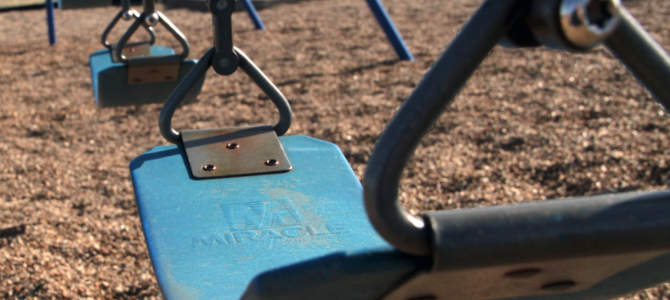
Secretary of Education Betsy DeVos recently said she’ll consider withholding funds from schools that fail to make in-person instruction available because she believes remote education isn’t working, especially for disadvantaged and disabled students.
The backlash was almost immediate. American Federation of Teachers union President Randi Weingarten tweeted, “[The Trump administration’s] goal isn’t safety, it’s politics.” But it’s Weingarten who’s playing politics, without concern for safety. For many families struggling with disabilities, school closures aren’t just inconvenient, they’re cruel.
Disabled Students Have a Right to Education
When schools closed in March, many disabled students lost access not only to their education but to all the supports that keep them safe. This deprivation is in violation of the law.
In 1975, Congress passed the Individuals with Disabilities Education Act, or IDEA, which requires all school districts to provide “free appropriate public education” to every disabled child. Last year, 7.1 million students were receiving special education under IDEA, representing 14 percent of all students. Most of these kids, 86 percent, are members of minority groups.
IDEA requires education for all, not just some, disabled students. Many disabled kids simply can’t be taught remotely, requiring occupational and physical therapy, life skills training, behavioral modification, communication therapy, medical care, and more before they can be open to academic instruction.
Many of these services stopped months ago, and the kids losing them not only ceased making progress, they lost skills. Even worse, the schools placed many kids and families in danger. Public education for the disabled is about a lot more than education: It’s a key part of our nation’s social safety net.
I Know What It’s Like
I know this from personal experience. My son Jonathan is autistic, bipolar, and has a seizure disorder. He’s one of more than 1.1 million students diagnosed with either autism or an emotional disturbance. Jonathan is nonverbal and requires help with even the most basic life functions, including eating, dressing, and bathing. He doesn’t understand the concept of danger and needs attention at all times because if left unwatched, he could place his hand on a hot stove or run into the path of an oncoming car.
Following my wife’s death, Jon fell into a terrible cycle of violence. He became so difficult that his school assigned three staff members to be with him, not only for his safety but for the safety of others. Even with all that support, some days Jon would hit himself hundreds or even thousands of times.
Things came to a head after he sent me to the hospital, and I realized I could no longer handle him alone. The problems increased when I couldn’t find specially trained caregivers to pay privately. My state had a program designed for children like my son, but it would be an eight-year wait. I couldn’t even turn to the government for help.
It was nearly a year and a half before I could hire anyone, and the only reason my family managed over those many months was thanks to the public school system. For 30 hours most weeks, I could count on my son being in a safe place.
Parents Are Struggling
Our family has been lucky; Jon has attended school throughout the pandemic. Many parents haven’t been so fortunate, however. There are single parents who right now are caring for teens who school administrators say require multiple dedicated staff.
Just imagine a single mom being told in March she’s on her own with a child requiring 24/7 care. Not being able to work is the least of her problems; finding appropriately trained caregivers is nearly impossible, and her life is one of fear and toil without respite. She has no meals out, no time to socialize with friends, no movie nights, and no breaks of any kind.
Unable to leave her child at home, she takes him everywhere, even to pick up a few groceries. It’s also not uncommon for many disabled children when placed in unfamiliar circumstances or exposed to loud noises, to react violently, which could easily be misinterpreted and trigger a call to police.
Parents of kids with disabilities already struggled mightily before the shutdowns. Statistics show those caregivers with autistic children have a 1.8 times greater risk of depression. Mothers of kids with intellectual disabilities and autism have double the risk of death: 40 percent more likely to die of cancer, 150 percent more likely to die of cardiovascular disease, and 200 percent more likely to die of “misadventure,” such as suicide, drug overdose, or homicide.
Keeping Schools Closed Is Cruel
Weingarten calls the Trump administration’s push to reopen schools “evil” and “cruel,” but what’s evil and cruel is keeping schools shuttered. While it makes sense to continue remote learning for kids whose parents aren’t comfortable sending them back, it also makes sense to open schools for the many disabled children who are entitled to receive an education under the law. Those children should not be forgotten.
You cannot be on the side of the disabled and also be for keeping schools closed. It’s that simple.









